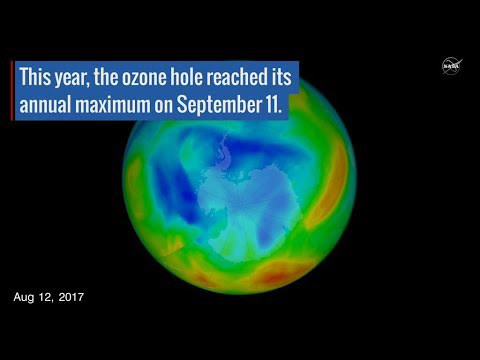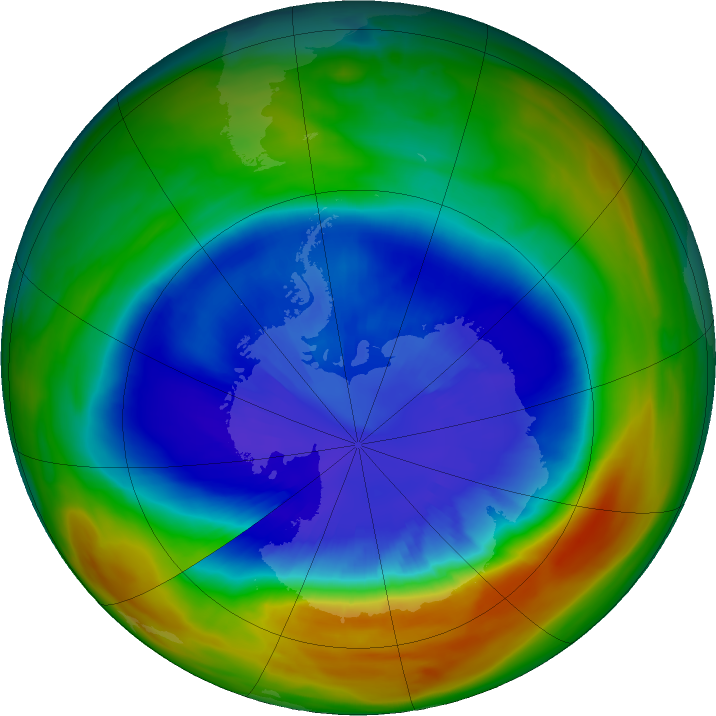

The hole in Earth’s
ozone layer is the smallest it’s been since 1988, NASA satellite estimates observed.
While the ozone hole is still enormous—measuring about 19.6 million square kilometers (7.6 million square miles, or 2.5 times the size of the U.S.) at its annual peak extent this Sept. 11—that’s much smaller compared to the average area of ozone hole maximums since 1991 of roughly 26 million square kilometers (10 million square miles).
“In the past, we’ve always seen ozone at some stratospheric altitudes go to zero by the end of September,” said Bryan Johnson, NOAA atmospheric chemist. “This year our balloon measurements showed the ozone loss rate stalled by the middle of September and ozone levels never reached zero.”
The ozone shield in Earth’s stratosphere helps absorb the sun’s dangerous ultraviolet radiation, which causes problems such as skin cancer.
Since the alarming discovery of the Antarctic ozone hole in the 1980s, international efforts such as the
landmark 1987 Montreal Protocol have phased out the industrial production of ozone-depleting chlorofluorocarbons used in air-conditioning, refrigeration and aerosol-spray propellants.
The Antarctic ozone hole at its widest extent for the year, as measured on September 11, 2017.
Ozone Monitoring Instrument on NASA’s Aura satellite.
“It’s really small this year. That’s a good thing,” said Paul Newman, chief Earth scientist at NASA’s Goddard Space Flight Center.
And while this year’s tinier ozone hole is certainly good news, don’t pat yourself on the back just yet for ditching the hairspray can.
First, NASA explained that an unstable and warmer-than-usual Antarctic vortex helped minimize the formation of
polar stratospheric clouds, which are important precursors to the chlorine- and bromine reactions that destroy the ozone.
Secondly, NASA said “the smaller ozone hole extent in 2017 is due to natural variability and not necessarily a signal of rapid healing.”
Warm air helped keep 2017 #Antarctic #OzoneHole smallest in 29 years: https://t.co/sE6qJh61Lm @NOAAResearch @NASAEarth pic.twitter.com/qP1OMumER6
— NOAA (@NOAA) November 2, 2017
Scientists hypothesize that the ozone hole won’t shrink back to its 1980 size until the year 2070—that’s more than 50 years from now.
The ozone hole is still massive because harmful chemicals in the environment continue to pose a risk. However, with continued efforts to reduce chlorofluorocarbons, the hole will gradually become less severe.

 233k
233k  41k
41k  Subscribe
Subscribe 
